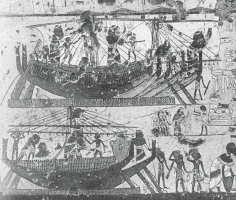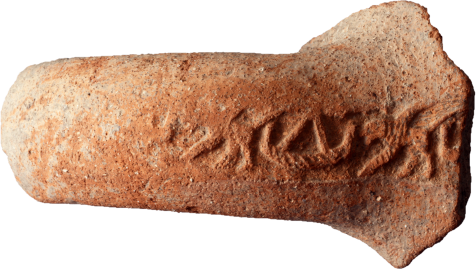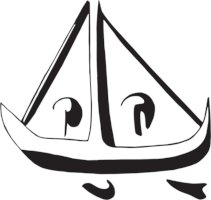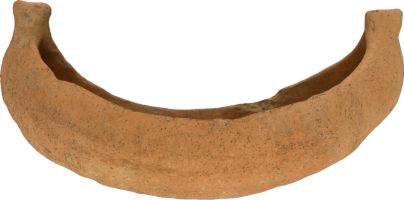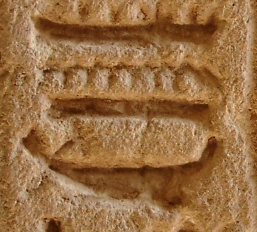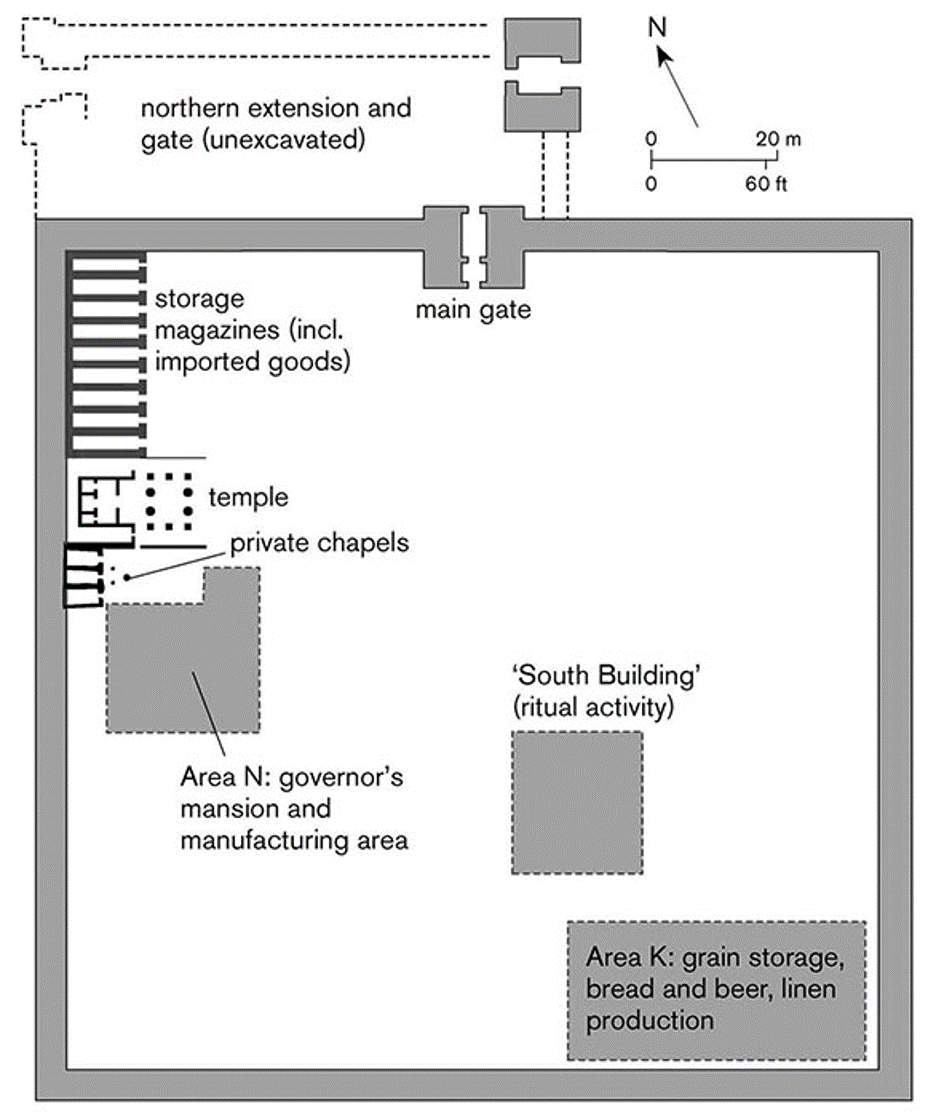Ship facing right, with a crescentic bowl-like hull and a nearly flat sheer. The stempost rises vertically with a gentle curve, and ends in a flat undecorated extremity. The sternpost is short and capped by a rectangular element. The steering oar is slightly curved, with a leaf-shaped oar blade.
mnš ship determinative
L5f
Ramses II (1290-1224 B.C.)
rear room of private chapel
autobiographical text on the back pillar of a standard bearing statue of Neb Re
Cairo Museum
Snape 2013: 450-452, fig. 10
Zawiyet Umm el-Rakham (ZUR) was a major Egyptian fortress located on the narrow coastal fringe between the Mediterranean Sea and Egypt's Western Desert, some 300 km west of the Nile Delta. It was established in a transitional zone, at a point where the coastal strip widens, thus acting as a gatekeeper to the wider coastal plain east of it. It was founded early in the reign of Ramesses II and was probably abandoned during or shortly after, given that no other royal names have been found at the site (Snape and Wilson 2007: 129). The sheer size (20 000 m2 area, 560 m mudbrick wall 4.5-5 m thick) of the fortified settlement suggests a sizable garrison of about 500 men, with the scale of the defenses reflective of a very substantial investment by the Egyptian state (Snape 2013: 442; Snape and Wilson 2007: 127). The site boasted a limestone temple with adjacent chapels, magazines, a major provisioning area for bread and beer production, and a complex multi-room structure that possibly acted as the Governor's residence.
ZUR's primary function was "to secure this part of the North African coast as a transit route giving unimpeded access for arriving/departing mariners, against the possible unwelcome interventions of an eastward-encroaching and non-participatory set of "new" Libyans, especially Meshwesh and Libu." (Snape 2013: 453) The importance of ZUR as a coastal trading post, logistically close to the harbour at Mersa Matruh (20km east), is supported by the significant number of imported material in its temple storage magazines, in particular transport containers such as Canaanite amphorae and coarse ware stirrup jars (Snape 2000; 2001; 2003).
The mnš determinative is found on the back pillar inscription of a standard bearing statue of Neb Re, ZUR's commander and a high-ranking military officer. The relevant section of the autobiographical text concerns the provisioning of the fortress: “‘[…] many rooms of grain from the field and from the hold of the menesh-ship, ferrying more grain than sand, which is for the district […].” (Snape 2013: 450)
The use of mnš as seagoing merchant vessels is thoroughly consistent with other Egyptian texts, in this case specifically for transporting grain. The notable increase in visibility of mnš during the reign of Ramesses II lends credence to the idea that the vessel type gained greater popularity and was adopted and built in Egypt itself at this time. Snape is right to posit that this technological development opened new possibilities, by making it far more efficient to provision faraway coastal fortresses: "it may well be that the extension of Egyptian control as far west as ZUR was only possible through the technically advanced menesh-ship, which made long-range sea-going movement of large cargoes and troops possible" (Snape 2013: 452).
Snape, S. 2013. “A Stroll along the Corniche? Coastal Routes between the Nile Delta and Cyrenaica in the Late Bronze Age,” In Desert Road Archaeology in Ancient Egypt and Beyond, F. Förster and H. Riemer (eds.). Köln: Heinrich-Barth-Institut, pp. 439-59.



